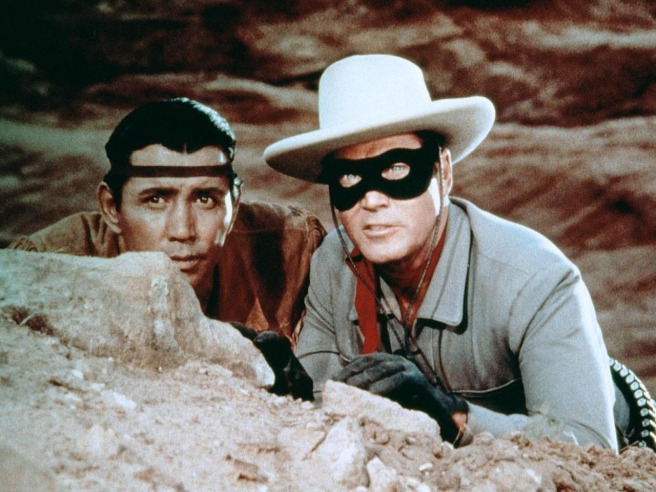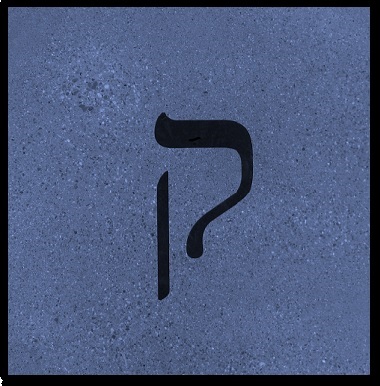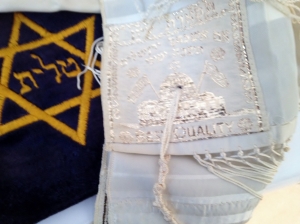 Why would a 71-year-old rabbi spend time watching reruns of “The Lone Ranger,” a western television show more than 60 years old? The answer is simple: The message.
Why would a 71-year-old rabbi spend time watching reruns of “The Lone Ranger,” a western television show more than 60 years old? The answer is simple: The message.
As creatures created b’tzelem Elohim (in the image of God), our primary responsibility and purpose is to use our skills and talents to create a more just, caring, and compassionate world.
Although we may not cure cancer or make peace between Israel and the Palestinians, our covenant with God requires each of us to do what we can to fulfill the charge God made to Abraham in Genesis: to “[k]eep the way of the Eternal one, and to fill the world with tzedakah u’mishpat (righteousness and justice).
Pursuing righteousness and justice is exactly what the Lone Ranger and Tonto do. Battling hopeless odds, they right wrongs; thwart those who kill, cheat or exploit others; and help the good guys come out on top. In real life, of course, evil often triumphs over good, and fighters for justice and righteousness do not always prevail.
No matter what we have suffered, and no matter how dire things may have been, our people clings to the idea that the world can be better – and that we can be agents in that improvement.
We do well to remember that in the wake of Charlottesville!
Indeed, the Lone Ranger and Tonto symbolize the vital Jewish value of hope, always on the lookout for evil forces to defeat and never seeking or accepting rewards for doing what is “just and right.” Once their work is done, they ride off swiftly, searching for the next opportunity to make a positive difference in the world.
In particular, Parashat Re’eh, this week’s Torah reading, reminds me of what the Lone Ranger and Tonto represent. First, we read God’s ideal: “There shall be no poor or needy in your land” (Deuteronomy 15:4). But several sentences later, we confront the contradictory reality: “But the poor shall never cease from your land…open your hand to the poor and needy kin in your land” (Deuteronomy 15:11). Do not turn away from them. Do whatever you can to help.
The Lone Ranger and Tonto embody this ideal, fighting relentlessly to make the Wild West a place in which ruthless villains are nearly powerless to thwart others’ hard work or hope for the future.
But, just as these two cannot eliminate the bad guys entirely, neither can we create a world that is fully without evil. It is a glorious ideal that constantly eludes us.
But we, like the Lone Ranger and Tonto, can inch the world closer to that celebrated hope. Their work – and ours – takes on greater urgency as the Hebrew month of Elul approaches and with it the task of scrutinizing our conduct to determine how we – individually and collectively – might live closer to God’s hope for us.
Our tradition teaches that after shattering the Golden calf, Moses went back up the mountain on the first of Elul to try again. He hewed new tablets and spent 40 days in contemplation on Mt Sinai before descending, on Yom Kippur, with the second set of God’s commandments.
When we reach the first of Elul in less than a week, Yom Kippur will be just 40 days away. The Lone Ranger and Tonto model well how we can use these precious days, and it is reflected in this story I first heard from Rabbi David Saperstein more than 40 years ago:
A man who went every day to the wicked city of Sodom encouraging the people to repent.
His friends called him a fool saying, “Don’t you know those people will never repent. Why do you go down there every day wasting time and energy? Those people will never change and be like you.”
“Perhaps not,” the man answered, “but I must do what I can every day, so that I don’t change and become like them.”
No, the good guys don’t always win and the world will never be perfect. It is for these very reasons that I love watching “The Lone Ranger” because he and Tonto never stop trying to make our world a better place – and we can do the same.


